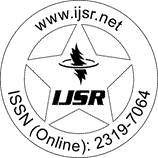Downloads: 110
India | Computer Science Engineering | Volume 3 Issue 7, July 2014 | Pages: 664 - 667
Work Load Allocation and Cumulative Analysis in Training and Assessment Department Based On Balanced Load Approach
Abstract: Efficiency of an organization increases when the systems are automated. Assigning tasks to the team, setting a time frame for team members to complete the task is one of the key factors that aid in the growth of the individual employee and the organization. These activities when handled manually leads to data inconsistency, room for errors and miscopying of information. There is a need to automate the allocation of resources such as managers to team members, assigning tasks to each teams and individual team members, evaluate the performance of the individual employee based on the successful completion of the task assigned within time boundary. The application enables the managers to set goals for the team members, send notifications regarding the goals that are communicated through the electronic mails. The system has auto evaluation system for the individual team members based on the several parameters like feedback, target reached.
Keywords: Work load indicator, Cumulative efficiency, load balance, efficiency factor
How to Cite?: Akshatha Prabhu, Pavitra.M, "Work Load Allocation and Cumulative Analysis in Training and Assessment Department Based On Balanced Load Approach", Volume 3 Issue 7, July 2014, International Journal of Science and Research (IJSR), Pages: 664-667, https://www.ijsr.net/getabstract.php?paperid=20141087, DOI: https://dx.doi.org/10.21275/20141087
